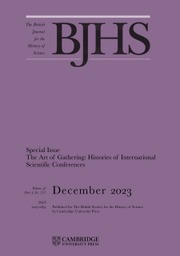‘Music like everything else in the world is subject to the laws of evolution’; so wrote the eminent British composer Ralph Vaughan Williams in National Music (1934). As Vaughan Williams shows, music has proved a beguiling subject for theories of evolution since their advent, and evolution an enticing framework for theories of music. In this compact book, Miriam Piilonen critically engages with this history of ideas, focusing primarily on its Victorian heyday and its recent revival: an unwelcome surprise in Piilonen’s view.
Piilonen’s offers shrewd analyses of Charles Darwin and Herbert Spencer’s writings on music. Spencer, who dominated Victorian culture but soon fell out of favour, receives a particularly thorough reappraisal. Piilonen ably negotiates Spencer’s labyrinthine prose, offering useful insights into how his ‘The origin and function of music’ (1857), with its claim that music originates in impassioned speech, relates to the materialist and anti-dualist theory expressed in The Principles of Psychology (1855). Spencer radically claims a unity between emotion and cognition: music’s origins lie in physical reflex actions to emotions. This exemplifies one of Piilonen’s central claims: ‘all evolutionary claims about music are also ontological claims’ (p. 7). Piilonen engages various neglected aspects of Spencer’s musical thought; Chapter 3, for example, assesses his contribution to theories of sound symbolism. Here, the ethical implications of Spencer’s metanarrative – the unwavering advance of progress and complexity – and his ‘situated understanding’ (p. 137) of music are made clear. For Spencer, emotional perception, expression and the well-suitedness of language to meaning distinguish certain ‘advanced’ groups from others along the lines of gender, race and class. Thus Spencer’s theory functions as ‘a technology of hegemony’ (p. 69). Chapter 1 concludes by evaluating Spencer’s writings on musical ‘earworms’, another neglected aspect of his theory, although it is less clear how this ‘analytical experiment’ (p. 11) serves the overall aims of the book.
Piilonen’s comprehensive approach to Spencer, interesting in its own right, serves a wider purpose: to challenge Darwinian hegemony. Piilonen considers Darwin no less unreliable an authority on music and highlights his own uncertainty regarding its evolutionary role. Darwin’s ideas form part of his broader argument for continuity between humans and animals: music originates in sexual selection, though it is no longer a sexual characteristic in humans. Piilonen adeptly exposes the ethical problems with this adaptationist explanation; for example, ‘if sexual selection drives musical diversity and difference … then the so-called proper appreciation of musical beauty implies one’s fitness for survival’ (p. 108–9). Piilonen’s analysis of Darwin is bolstered by Darwin’s contemporary, Antoinette Blackwell. Piilonen uses Blackwell’s feminist critique to interrogate the sexism that underpins (and was encouraged by) Darwin’s framing of musical sexual selection. Other Victorian writers are investigated to explore the influence of these ideas; the relevance of these investigations and rationale for the amount of detail offered is, however, not always clear. Chapter 2 offers a critique of George Romanes, whose racist hierarchy of musical evolution is underpinned by Darwin’s theory, and Chapter 5 is dedicated to analysing the ‘post-Darwinian’ (p. 4) theory of Edmund Gurney, leading to a broader discussion of formalism in music analysis. Piilonen gives little space to how theories of music evolution affected music-making, which would have been an effective way of assessing their impact. For example, the writings of Vaughan Williams, Darwin’s grand-nephew, echo his teacher Hubert Parry, himself steeped in Spencer’s ideas. Like Cecil Sharp and other contemporaries, he applied evolutionary ideas to theories of folk song (an idea briefly ridiculed by Piilonen on p. 142) and national musical styles; furthermore, his music is frequently analysed as intentionally embodying these ideas.
The conflicting views of Spencer and Darwin on the origin of music are well known. Piilonen’s nuanced treatment shows a ‘mutually constitutive’ (p. 11) convergence between the two; despite Darwin’s modern reputation as ‘the avatar of music evolutionism’ (p. 44), his writings on music were, in many ways, an extension of Spencer’s. Piilonen’s analysis of this ‘debate without a winner’ (p. 50) is perceptive but underplays important differences, notably the underlying concepts of progress. Peter Bowler’s work, which receives only a single citation, would have been a useful touchstone here. Ultimately, Piilonen argues that Victorian music-evolutionists ideologically invoked music as a flexible ‘boundary-drawing concept’ (p. 137). This is a valid point, but it does not substantially move beyond Bennett Zon’s work, especially Evolution and Victorian Musical Culture (2017), which offers a more insightful exploration of the complicated network of Victorian musical evolution.
Piilonen’s critique of Darwin sets the stage for her attack on modern music evolution. She perceives that, in the absence of evidence, such research relies on the authority offered by historically constructed Darwinian credentials; consequentially, they risk perpetuating anachronous ideologies and biases. This is an effective approach for extreme applications of Darwin, such as by Benjamin Charlton and Geoffrey Miller, but is less effective in more nuanced examples. The difference between the musical evolution that Darwin himself tentatively offered and a modern musical evolution based on the principles of Darwin’s general theory is not sufficiently defined. Gary Tomlinson receives the most sympathetic reading but, despite his best efforts, it seems that even he cannot escape adaptationism. Piilonen makes clear in Chapter 4’s conclusion that all music-evolutionists are tied to adaptationism – sometimes outdated, extreme forms – and thus they are both behind the times of evolutionary science and wedded to reductive and unsubstantiated musical ontologies.
Piilonen’s bleak conclusion offers little hope for music evolution; here, as throughout, the enterprise is treated as speculative, ideological ontologizing, with little to offer rational enquiry. Music evolution might provide useful evidence for historians of ideas, but it offers little to biologists, anthropologists or music theorists. There is a risk, however, in reducing music evolution to its Victorian origins, just as there is in reducing music to an adaptive trait. The ‘blunt tool’ (p. 140) of evolution may well not explain everything there is to know about music, but this need not imply that it offers nothing of scholarly value.


